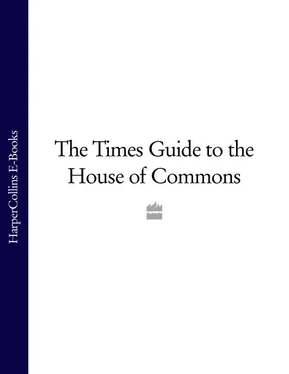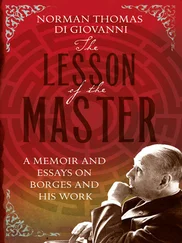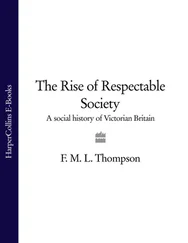Mr Paulson’s counterparts on the other side of the Atlantic were also having a bad day. Having sought to secure HBOS days before, the Chancellor was forced to announce that Bradford & Bingley was to be nationalised and made the British taxpayer take control of £50 billion of its mortgages. To make matters worse, Iceland, whose own financial system was intertwined with the fate of British investors, started to collapse.
Desperate to create a fund that would help to restore some confidence in the US financial system, Mr Paulson endured new talks to persuade Washington to agree to the $700 billion rescue plan. On October 3 on the White House lawn, Mr Paulson announced his deal.
On the morning of October 7 in London a bloodbath broke out in the markets. A Treasury official phoned Mr Darling, who was in Europe at a meeting of finance ministers, to say that RBS stock was down 40 per cent, pulling the rest of the banking sector with it. A team led by the Prime Minister’s trusted aide Baroness Vadera rapidly drew up a three-point plan to provide liquidity, guaranteed funding and capital injections. They agreed a new £50,000 threshold to guarantee retail deposits. They pulled together a rescue package of £50 billion for the banking system, supplemented by another £200 billion of support. By the end of the day, five central banks including the Bank of England had cut interest rates by half a percentage point.
Had observers been in any doubt about the purpose of releasing a wall of money on the British banking system, it would have become clear to them on the morning of October 13. The Government announced that it had pumped £37 billion into RBS, Lloyds and its new business, HBOS, to prevent the three lenders collapsing and part-nationalised them.
In the months that followed Wall Street and the City proved that they had emerged from the storm. The credit crisis began to spread to other industries, such as the automotive sector. But Westminster and Washington began the process of devising long-term assistance schemes and drawing up new regulatory regimes.
Within 18 months of the height of the banking crisis, Mr Paulson and Mr Darling had both been voted out of office. In neither case because they were seen to have personally failed to deal with the worst financial crisis for almost a century, but because politically both countries had moved on. Mr Paulson’s battered mobile Motorola phone, which was used to negotiate every bail-out, is now an artefact in the Smithsonian Institute. Observers may hope that the banking crisis is contained, if not consigned, to history.
Suzy Jagger covered the American sub-prime crisis as US Business Correspondent until February 2009.
SNP pioneers of minority rule
Angus Macleod
Scottish Political Editor
Within the 2005 general election there lay a warning for Labour north of the Border that went largely unheeded. The party in Scotland, as everywhere else in Britain, had benefited for years from the Tony Blair “Big Tent” approach to building support across voter categories and divides. Yet, as opposition to the Iraq War lingered, that essential coalition of interests showed signs of breaking up in Scotland. Suddenly, middle-class Scottish voters who had supported the party since the mid-90s were increasingly exasperated and bitter. While its Scottish working-class heartlands stayed loyal, less committed Labour voters turned to the anti-war Liberal Democrats and SNP, to voice their dissent. Urban seats in Glasgow, Edinburgh, Aberdeen and throughout Scotland’s central belt, while still returning Labour MPs, had become highly marginal.
If there was disillusion with Labour at UK level, the same was true at the Scottish Parliament. Devolution had recovered from early traumas over MSPs’ expenses and controversy over the £400 million cost of the new Holyrood building, but it had not delivered the step change in public services that the Scots imagined it would. The Labour-led Scottish Executive had delivered groundbreaking policies, such as a ban on smoking in public places and free personal care for the elderly, but it was widely perceived to have governed looking over its shoulder for approval from London. For the Scots, devolution had not been Scottish enough.
The SNP, once more under the shrewd leadership of Alex Salmond, who returned to the post in 2004, was also recovering from a series of average election performances but Mr Salmond saw that the 2007 Scottish Parliament election would provide his party with its biggest chance yet to win power.
He saw that his party representing the Scottish interest and with no obligation to a wider party at UK level left him a golden opportunity. He set about professionalising the party machine, amassing an unprecedented £1 million election war chest from sympathetic business donors and presenting a set of policies that played into Scottish anxieties about escalating council tax bills, the NHS and education priorities.
Labour was flat-footed, perhaps believing that an SNP victory would never happen. In the months leading up to the 2007 election, it was obvious that only one party had momentum and it was not Labour. Anxieties about the SNP’s core aim of independence were put to one side because voters knew that the break-up of Britain could not happen without a referendum. Labour’s campaign was confused; the SNP’s, with promises to abolish the council tax, cut class sizes and restore hospital A&E units, was exciting for many of those “soft” Labour voters who had deserted Labour in 2005 and were ready to do so again. To Labour’s dismay and disbelief, the SNP emerged as the largest party. When their promise of an independence referendum proved an insuperable roadblock to forming a majority coalition with the Lib Dems, Mr Salmond opted for minority government, daring Labour and the other unionist parties to bring him down. His calculation proved prescient especially as his honeymoon in government turned out to be no nine-day wonder. He and his minority government set about delivering on manifesto promises that did not need legislation. Through delicate and skilful manoeuvring, he was able to attract enough support from at least one opposition party to get his annual budgets through Parliament.
Labour was dumbstruck. Unable to react, it became embroiled in an internal row over the leadership campaign expenses of Wendy Alexander, who succeeded Jack McConnell as Scottish leader. She resigned and was followed by Iain Gray, whose dogged but lifeless leadership meant that Mr Salmond, as First Minister, was able to retain his position as the major personality of devolved politics. As Labour’s problems grew at Westminster under Gordon Brown, poll after poll showed that the SNP was, if anything, consolidating its position in Scotland.
The gloss was bound to come off the nationalists at some point. From mid-2009 it did. Their very status as a minority administration meant that a whole series of probably over-the-top manifesto priorities, such as cutting class sizes and abolishing student debt, had to be ditched. The SNP had delivered a council tax freeze, but the next step of abolishing the tax altogether and replacing it with a local income tax was also put on hold, simply because the nationalists did not have the parliamentary votes.
Labour, in the meantime, entered into an opposition coalition with the Lib Dems and the Conservatives over constitutional powers looked at by the Calman Commission, which recommended a tranche of new tax-raising and other powers for Holyrood. Calman was a direct riposte by the unionist parties to the SNP’s independence agenda, although some unionists saw it as yet another concession to the nationalists. The SNP, for its part, was busy redefining what it meant by independence, talking loudly and often of a “social union” with the rest of the UK that would give Scotland full fiscal independence but with shared defence and diplomatic interests and retaining the Queen as head of state. It was dubbed independencelite. It was also a recognition by the SNP that Scotland, for all the SNP spin about the “London” parties, remained firmly unionist while wanting their devolved Parliament to acquire more profile through greater autonomy from Westminster.
Читать дальше












